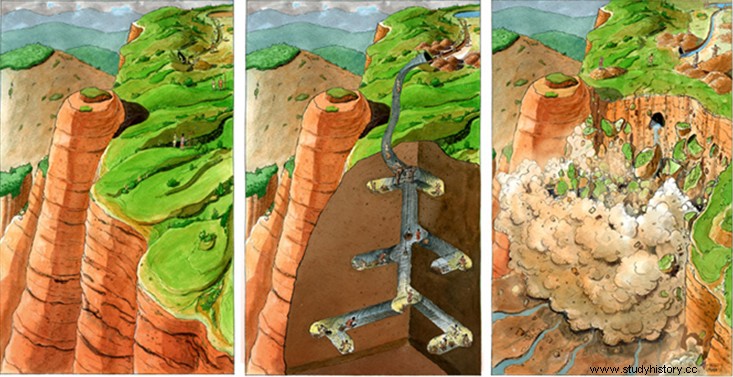Nowadays, a topic that is not without controversy is on the lips of many people, the technique of hydraulic fracturing or «fracking «. It consists of drilling a vertical well in the subsoil up to more than 2,500 meters and then continuing to drill another well horizontally up to a distance of between 1,000 and 3,000 meters. Once both wells have been drilled, pressurized water mixed with sand, chemical materials and proppant is injected in order to widen the existing fractures in the substrate that encloses the gas or oil and thus favor its release to the surface. This technique has become very popular in the United States and there is no shortage of supporters and detractors. Those in favor argue the economic benefits that can be achieved with said quantities of hydrocarbons, previously inaccessible, as a consequence of using this technique (a powerful gentleman is Mr. Money , says the Spanish proverb…), and those who oppose it mainly argue the high use of water, the contamination of aquifers and the increase in seismic activity.
Despite how modern this technique may seem, the truth is that it is nothing new. Centuries ago, it was called “montium ruin » and was used by the Romans to obtain aurum , argentum and ferrum (gold, silver and iron). For comparison, the «montium ruin » used by the Romans was a kind of «unceremonious fracking «:Once the deposit was located, the main objective was to obtain the precious metals as quickly as possible. Nothing mattered to the Romans about environmental impact or tremors, that was an alien thing - by the way, from the Latin alienus , from another, and the suffix gen , origin, «from another land «-. The emperors of the time wanted to fill their pockets to cover expenses and could not wait to obtain the precious minerals through the traditional system of mines. The main proof of the use of this technique in Spain can be found in the Leonese region of El Bierzo, in las Médulas (Metulae in Roman Hispania). Referring to the use of the «montiun ruin» or «mountain collapse» technique, the Roman historian Pliny the Elder wrote:
It is less reckless to look for pearls and purple at the bottom of the sea than to extract gold from these lands.

The exploitation of this mining area was carried out from 26 BC, when the emperor Octavio Augusto he needed funds for his campaign against the tribes of the north of the Iberian Peninsula. This dangerous technique consisted of undermining several tunnels (not like in fracking, which are two) and then making strong flows of water run through them, causing the immediate collapse of the land, an action in which many miners often lost their lives. As an interesting fact, the current landscape of Las Médulas is the consequence of the extraction of some 1,500 tons of gold…

Collaboration of Pedro Sanmartín Image:Fotonatura, 2,
